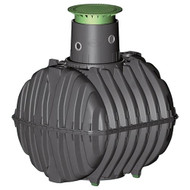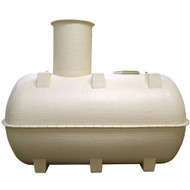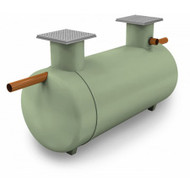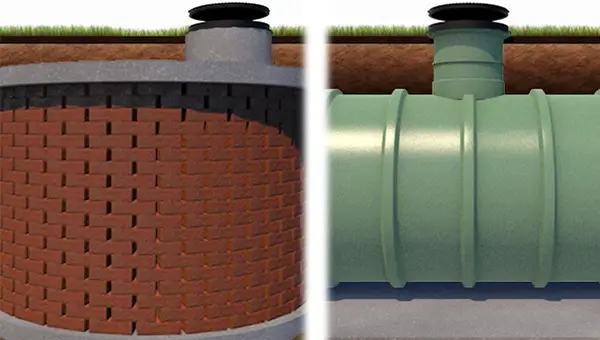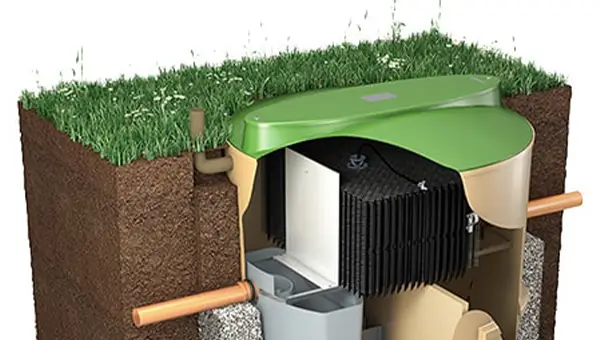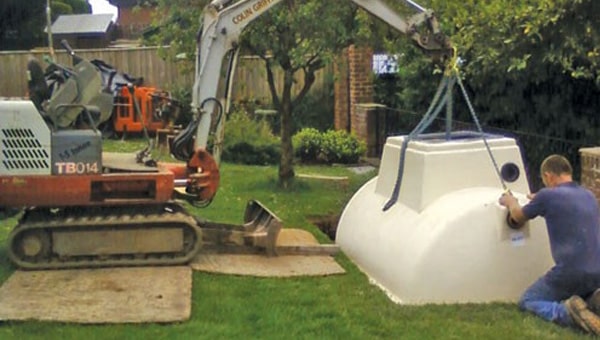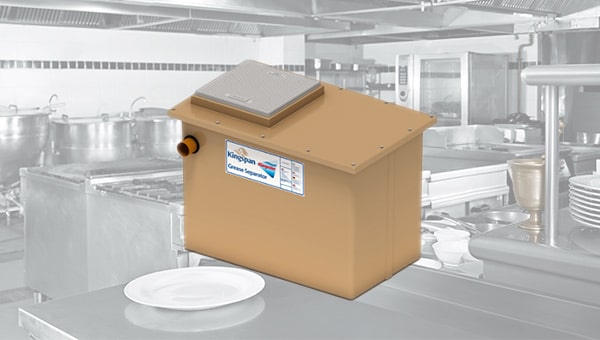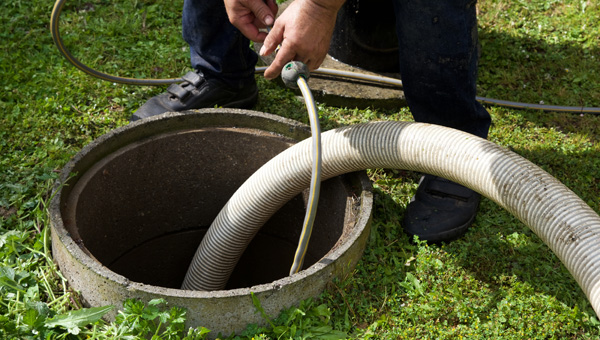
While they do emulate the convenience of a mains connection, saving you a bracing dash to an outhouse in the winter, having your drainage system connected to a septic tank does come with extra responsibilities.
If you are buying a house that has a septic tank, or if you have just installed a new one, it is important to know how to properly use and maintain it, especially if you are used to having a connection to the mains sewers. In this article, we will discuss the do’s and don’ts and best maintenance practices to help keep your system running smoothly.
Note: This article assumes prior understanding of all the off-mains solutions available to you and that you’ve chosen a septic tank to be the most suitable one for your property. If you are unsure, however, we strongly recommend first taking a look at our guide to off-mains drainage article.
How to use a septic tank system
The treatment process of a septic tank system is generally quite simple and will require no specialised knowledge to operate. However, as with any other off-mains system, it is important to know how it works and to understand that there are some restrictions to use, when compared with a normal mains sewer connection.
Unlike a sewage treatment plant, a septic tank doesn’t provide any treatment to the waste water, and so must always discharge into a drainage field. However, what a septic tank does still do is to separate out the solids using gravity. The lighter solids, along with oil and grease, float to the surface, while the heavy solids sink to the bottom of the tank. There, some of the ‘sludge’ is broken down by natural bacteria, though much of it will still remain and build up over time. As such, your septic tank will still need emptying at regular intervals by a registered waste carrier. Whilst limited, this sludge breakdown is an important part of the process, and the bacteria in the tank that facilitates it needs to be protected.
For this reason, it is important to follow the manufacturer’s guidance on what should and shouldn’t be flushed into the tank. The following is a list of the things that could be affected:
- Washing dishes - use a dishwasher if possible as they are much more efficient at converting fat into soap.
- Whilst all active ingredients in soap and detergents should be biodegradable and, in normal use, safe for septic tanks, excessive amounts can upset the natural balance of your septic tank. Try to use mild detergents, toilet fresheners, fabric conditioners, washing powders and washing liquids in moderation to prevent this.
- Use all bleaches and disinfectants sparingly as they can kill the essential bacteria within the septic tank.
There are some very important “Don’ts” when it comes to protecting your septic tank. Some of them are obvious, but others are things you might not think twice about if you have never had a septic tank system before. Let’s take a look at these next.
What should you avoid doing or using if you have a septic tank?
Rule number one when it comes to having a septic tank system is DO NOT USE YOUR TOILET OR SINK AS A RUBBISH BIN! Never dispose of any of the following items into your drainage system, as they will clog up your septic tank in less time than you might imagine:
- Cat litter
- Disposable nappies
- Pantie liners
- Tampons
- Paper towels
- Facial tissues
- Cleaning wipes
- Coffee grounds
- Cigarette ends
To be fair, these are all things that you should avoid putting down your sinks and toilets even if you are connected to the main sewer system, but it is especially important not to do it if you have an off-mains system. While a cleaning wipe blockage on a mains system may get you a stern talking to from a disgruntled plumber, the same blockage in a septic tank or septic drainage field can be a lot more…unpleasant.
You also need to be a bit more careful about what you pour down the sink and what cleaning and disinfectant products you use.
- Do Not overuse antibacterials, disinfectants and heavy cleaners, as they will kill the beneficial bacteria in the septic tank which digest your solids.
- Do Not use antibacterial hand wash products as you are poisoning your septic tank bacteria with every wash.
- Do Not pour grease or oil down the sink. Wipe greasy dishes with paper towels before washing. Grease clogs the septic tank soakaway, and effectively 'waterproofs' it, making it impossible for soil to absorb liquids. If that happens you'll need a new soakaway.
- Do Not pour fats and cooking oil down the sink. They should be disposed of separately as they can prevent the soil surrounding your soakaway system from being able to absorb waste water effectively.
- Do Not pour white spirit, varnish, paint thinners, motor oils, petrol and other similar chemicals into the drains, as they will ruin your septic system and are not easily broken down by soil bacteria. This could lead to them polluting the groundwater.
- Do Not allow condensate from condensing boilers to go into the foul drains, as it is very acidic and will also ruin your septic system.
- Do Not install a waste disposal unit as these can double the amount of solids going into the septic tank.
Septic Tanks
How to maintain a septic tank
Before installing your septic tank system, you should have already planned for future maintenance needs. Things like making sure there is suitable access for desludging to take place, and keeping covers clear of obstruction (i.e. don’t cover them with soil or grass to try and hide them away). But once the system is installed, there are ongoing maintenance needs that need to be considered. Septic tanks and drainage fields won’t last a lifetime and will need replacing eventually (checkout our septic drainage field guide for more on this). However, with a bit of care and good practice operation, you can help ensure that you get as many years out of them as possible.
First and foremost, you are going to want to take out a Service Agreement (available through your local JDP or septic tank manufacturer), as annual desludging and servicing is critical to the longevity of your system. It is also a requirement of the new PPG4 guidelines.
Between these services though, there are many things that you can do yourself to help prolong the life of your septic tank and soakaway drainage field. These include:
Divert rainwater from the septic drain field
- A saturated drainfield can't absorb enough septic effluent.
- Plan landscaping, roof gutters and surface drains so that excess water is diverted away from the soakaway area.
Don't overload the septic tank and drain field
The amount of water used in the home has increased dramatically over the last 20 years. If your septic tank pre-dates the current regulations, it is probably too small and struggling to cope with current flow rates. There are things you can do to reduce this problem:
- Repair leaking and dripping taps and toilets. Dual flush toilets often leak at the valve after a period of time and need replacing.
- Use aerators on taps and low-flow showers to help lower water consumption. Power showers just increase the volume of water used.
- Change to a low water consumption washing machine and reduce water levels for small laundry loads.
- Don't run a half-empty dishwasher.
- Toilets account for over 35% of all the water used in the home, water which overloads your soakaway. Fit dual flush toilets, use a 'Hippo' or, even better, convert your existing toilet to an 'eco' toilet with an INTERFLUSH conversion kit to reduce the amount of water needed to flush to the absolute minimum. The Interflush is a kit which fits on top of your WC siphon and connects to the front mounted flush handle. The toilet only flushes when the handle is held down, releasing the handle stops the flush (when pan is clear). It only uses the exact amount of water required, any less and the toilet would need flushing again. That is why nothing can flush a toilet with less water.
Keep trees away from the septic system
- Discourage root damage by keeping trees at least 30 metres away from the soakaway.
- Trees with very aggressive roots, such as willows and poplars, should be even farther away from the system.
Protect your soakaway
- Do not drive over the soakaway, build a structure on top of it, or cover it with concrete or tarmac. Gravel is ok, but only for foot traffic
- Sow grass over the soakaway area, if possible, as grass takes up a lot of water.
Maintain your septic system
- Solids must be pumped from the septic tank on an annual basis. They only store 12 months worth of sludge, so extending the emptying interval beyond that will ruin your soakaway. Depending on usage it may require pumping more often.
- Never lift the lid of a septic tank yourself, particularly if you are alone! The gases in the tank can overcome you very quickly and the bacteria are dangerous. Sewage workers must have regular vaccinations, including hepatitis, tetanus and diphtheria, to protect against them.
The installation manual provided by the manufacturer will most likely have other recommendations of checks you can make yourself too. However, please ensure that you always follow their health and safety guidance for any maintenance you plan to do.
How to identify problems with your septic drainage system
If you notice any of the following, or anything unusual in general, it is best to get your system checked out as soon as possible.
- Dirty water pooling above ground over your tank or drainage field.
- Toilets flushing slowly or overflowing.
- Your tank needs to be emptied more frequently than usual.
DO NOT be tempted to try and access the septic tank yourself. The buildup of foul gases inside can be dangerous if you aren’t properly protected. Always consult a professional. For advice on things you can do to try and unblock a septic soakaway yourself, check out our “Unblocking a septic tank soakaway” article.
And that’s it for our advice on using and maintaining septic tanks. We hope it has been informative and helped to answer most of your questions regarding septic tank use and maintenance.
Should you have any other questions or need any further advice, however, please do not hesitate to contact us. JDP’s team of experts are always on hand to help with all of your civils and drainage needs.

